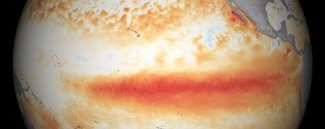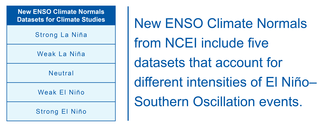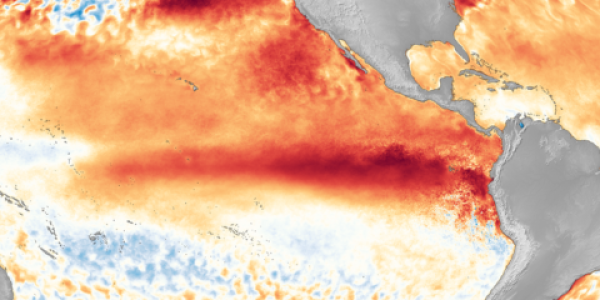New type of U.S. Normals addresses influence of El Niño and La Niña

Scientists have developed new temperature and precipitation averages that take into consideration continuing fluctuations and trends in the U.S. climate.
Many scientific, engineering, and economic activities rely on conventional “climate normals”—30-year averages—as a benchmark of climate conditions across the United States. To enhance the usefulness of these averages, a new set of ENSO (El Niño–Southern Oscillation) Climate Normals has been developed for the contiguous United States by NOAA NCEI. These primarily take into account the influence of El Niño, La Niña, and climate change impacts.
El Niño and La Niña events are part of the ENSO cycle, which affects weather and climate conditions worldwide. Globally, El Niño leads to a warming effect, while La Niña contributes to cooler conditions. However, over the continental United States, El Niño and La Niña events are each associated with areas that are colder-than-normal or warmer-than-normal, as well as areas that are drier-than-normal or wetter-than-normal. The new averages also consider an optimal climate normal (OCN) to account for climate change impacts and align the basis of the normals with the most recent climate conditions.
The new ENSO Climate Normals are introduced in an article published online by the Journal of Applied Meteorology and Climatology, authored by scientists from NCEI and the Cooperative Institute for Satellite Earth System Studies (CISESS).
“In this study, we add composites of ENSO impacts to the OCN in order to provide users with a picture of what climate conditions may look like when a particular phase of ENSO occurs or is forecast by NOAA’s Climate Prediction Center,” the scientists state. “This new product can assist stakeholders in planning for a broad array of possible ENSO impacts in a changing climate.”
The article, currently published online and in press for print publication, has been designated as a “Paper of Note” by the American Meteorological Society (AMS). It will be highlighted in a forthcoming issue of the Bulletin of the American Meteorological Society (BAMS).
U.S. Climate Normals
Used by meteorological organizations around the world for analyzing climate conditions, climate normals are average values of temperature and precipitation over a period of time, typically 30 years, and are updated approximately every 10 years. The approach assumes a stationary climate and came into use about 75 years ago by the World Meteorological Organization (WMO), which sets standards of methodology.
Climatological normals are indispensable planning tools in a wide variety of industries. Private and public sector users, such as the energy and agriculture industries and state regulatory bodies, provided the impetus to develop the new ENSO normals.
The new datasets will be available as a beta release as early as 2020. Contact NCEI’s lead author for further information.
Reference: Arguez, A., A. Inamdar, M. A. Palecki, C. J. Schreck, and A. H. Young. 18 June 2019. “ENSO Normals: A New U.S. Climate Normals Product Conditioned by ENSO Phase and Intensity and Accounting for Secular Trends.” Journal of Applied Meteorology and Climatology, vol. 58, no. 6 doi/full/10.1175/JAMC-D-18-0252.1




